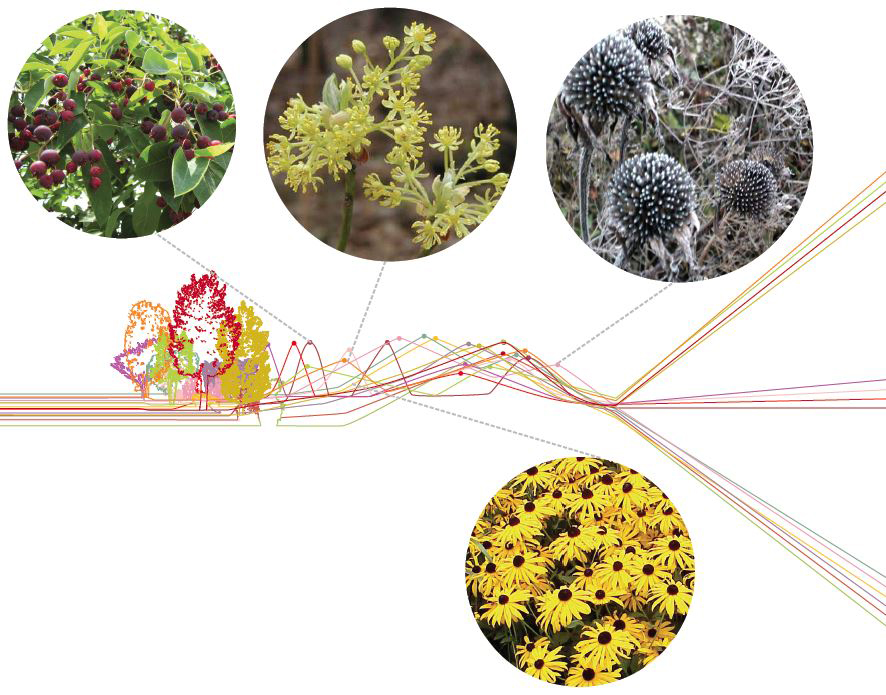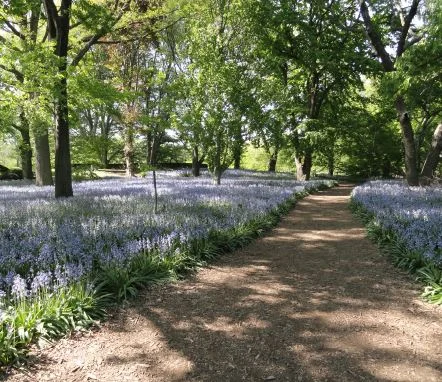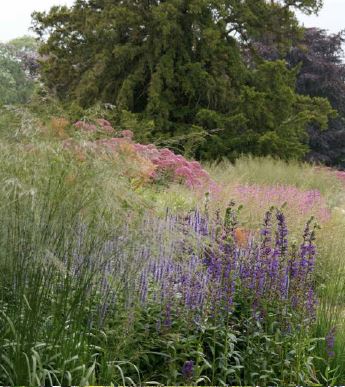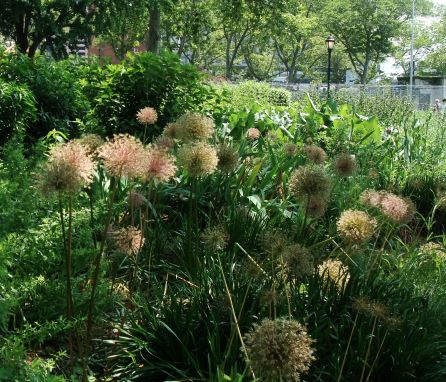Planting
In order to maintain budget and program ideals it is important to provide large areas of low maintenance garden. This would include hardy, native perennials, shrubs and trees that are largely self-sufficient with local conditions. Their yearly cycle becomes part of the garden experience. In addition, this type of planting decreases the necessary maintenance for large areas of the garden. Allowing for energy to be spent on more specialized sections of the garden. Winter should not be a hindrance to the use of the space.
Flexibility in the garden is important. This occurs on multiple levels. The first is a seasonal flexibility of use for events. The second is a flexibility of planting to change over time. The third is the ability to transition plants and experiment with their location to keep the garden an ever-changing experience.
The garden is be a place for retreat. Trees, plants, topography and structures create a sense of enclosure. It must function in this way before trees are fully mature and be a part of the immediate use.
The idea of discovery is heightened in the garden. Paths are constructed of materials that allow the user to appreciate the garden at a slow place. Visual end-goals are avoided by creating a winding terrain. The garden is about an experience, not an overtly formal expression in plan. Axial paths with objects of destination take the joy out of the experience by revealing the final goal. The concept of discovery can be applied to all aspects of the garden.




